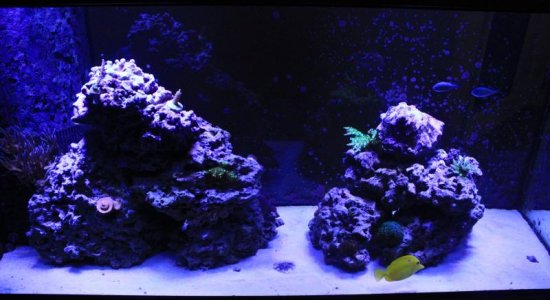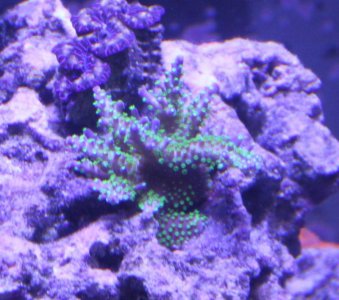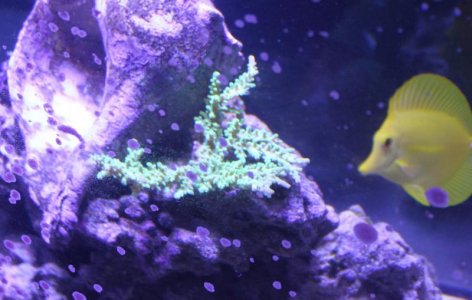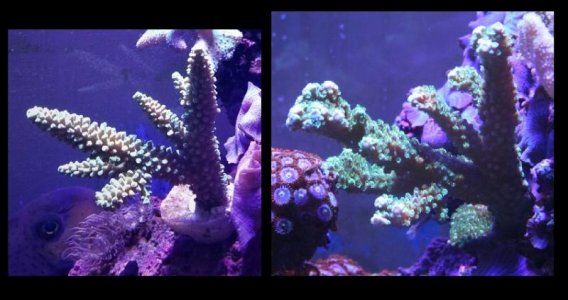Turtlesteve
New member
Over time I find myself becoming more distanced from the "consensus" approach on maintaining reef systems. While I do not actively post much anymore, I like to lurk and read about new advances and where the hobby is going. However, my own experience is leading me to simplify, and to be more skeptical of "trends" in the hobby. I'm posting to see if anyone else out there has similar experience (or not) and to hopefully start a productive discussion.
As some background I have newly returned to saltwater after a long break (I've got about 10 years experience in the hobby, and don't pretend to be an expert on anything). I've resurrected my old 90 gallon, which will be mainly SPS focused with a few LPS and zoanthids. After some consideration of past experience, I decided to simplify my setup greatly. The new system is skimmerless and the equipment list consists of two pumps, LED lighting, heaters, and auto-topoff. I decided to keep a small sump (while not doing much now it gives me flexibility). I started the system with dry rock and a thin sand bed (about 1/2").
So far, this system is much more stable than when I had it loaded up with accessories, and is less maintenance. The one caveat is that I'm only at the 6 month mark - but so far, so good. Current livestock is about a dozen corals, 6 fish, a maxima clam, and a half dozen snails. The system never really had any bad algae blooms (besides coralline) even when cycling.
To summarize my own experience, here's a breakdown of all the different equipment and techniques I have tried in the past, and my opinions:
Basic requirements: Lighting, powerheads/wave-makers, heaters, live rock
Beneficial: Auto-topoff (with kalkwasser)
Neutral: Protein skimmer, Ca-reactor, overflow/sump/return
Slightly bad: Refugium
Very bad: Any aerobic bio-media (bio-balls, filter socks, foam intake filters on pumps), deep sand bed
My hypothesis at this time is that having a single method of nutrient export (live rock) is good. In the past I had several methods (live rock, skimmer, deep sand bed, refugium, various filters). That system was never stable over any long period of time - I suspect because the biological systems compete with each other, and the system failed to reach steady state. As a hypothetical example, the nitrification/denitrification capacity of the live rock may suffer if it competes with algae growth and aerobic nitrification on other media. A disruption in one of these systems (such as cleaning / bleaching filter pads or harvesting macro algae) changes the competitive balance - and the other systems do not necessarily compensate quickly having been starved by the prior competition.
I intend to keep this experiment running, but I honestly don't know if the "simple" system will be sustainable indefinitely. I'm not inherently opposed to equipment or complexity in principle, I'm just trying to separate the wheat from the chaff so to speak.
Any thoughts?
As some background I have newly returned to saltwater after a long break (I've got about 10 years experience in the hobby, and don't pretend to be an expert on anything). I've resurrected my old 90 gallon, which will be mainly SPS focused with a few LPS and zoanthids. After some consideration of past experience, I decided to simplify my setup greatly. The new system is skimmerless and the equipment list consists of two pumps, LED lighting, heaters, and auto-topoff. I decided to keep a small sump (while not doing much now it gives me flexibility). I started the system with dry rock and a thin sand bed (about 1/2").
So far, this system is much more stable than when I had it loaded up with accessories, and is less maintenance. The one caveat is that I'm only at the 6 month mark - but so far, so good. Current livestock is about a dozen corals, 6 fish, a maxima clam, and a half dozen snails. The system never really had any bad algae blooms (besides coralline) even when cycling.
To summarize my own experience, here's a breakdown of all the different equipment and techniques I have tried in the past, and my opinions:
Basic requirements: Lighting, powerheads/wave-makers, heaters, live rock
Beneficial: Auto-topoff (with kalkwasser)
Neutral: Protein skimmer, Ca-reactor, overflow/sump/return
Slightly bad: Refugium
Very bad: Any aerobic bio-media (bio-balls, filter socks, foam intake filters on pumps), deep sand bed
My hypothesis at this time is that having a single method of nutrient export (live rock) is good. In the past I had several methods (live rock, skimmer, deep sand bed, refugium, various filters). That system was never stable over any long period of time - I suspect because the biological systems compete with each other, and the system failed to reach steady state. As a hypothetical example, the nitrification/denitrification capacity of the live rock may suffer if it competes with algae growth and aerobic nitrification on other media. A disruption in one of these systems (such as cleaning / bleaching filter pads or harvesting macro algae) changes the competitive balance - and the other systems do not necessarily compensate quickly having been starved by the prior competition.
I intend to keep this experiment running, but I honestly don't know if the "simple" system will be sustainable indefinitely. I'm not inherently opposed to equipment or complexity in principle, I'm just trying to separate the wheat from the chaff so to speak.
Any thoughts?




